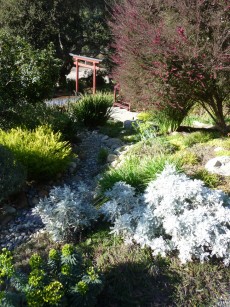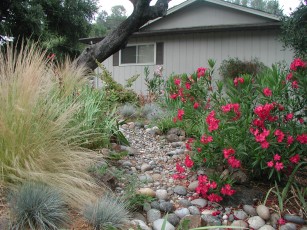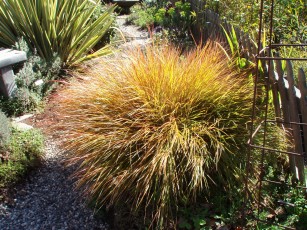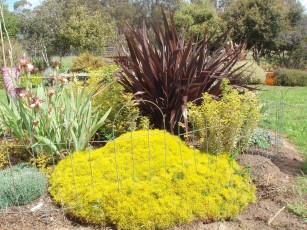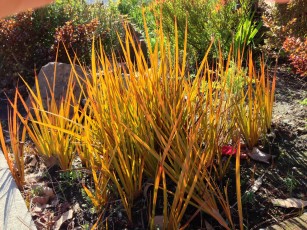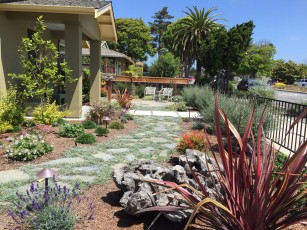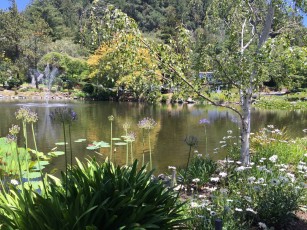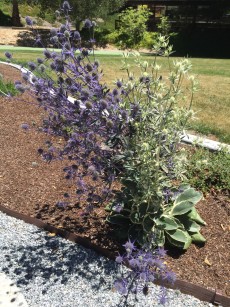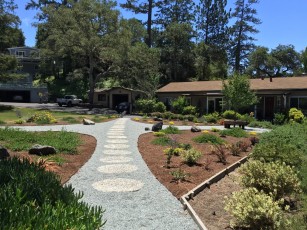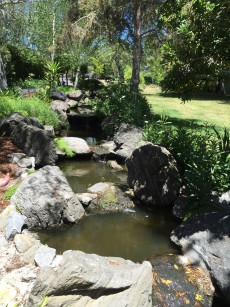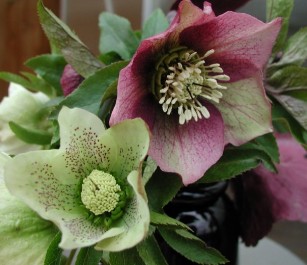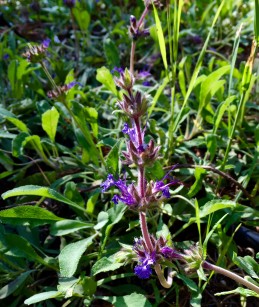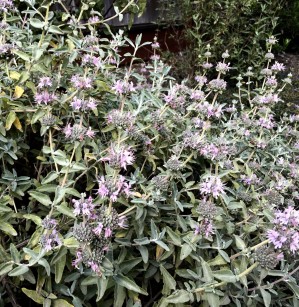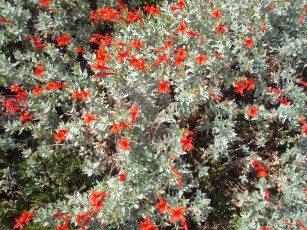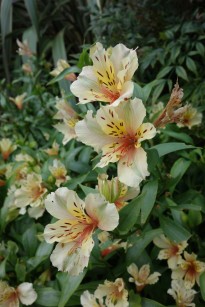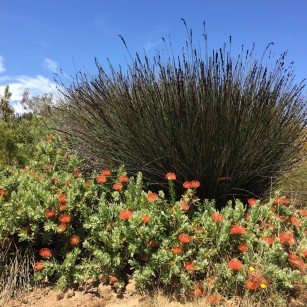
Our local UCSC Arboretum is a place everyone can enjoy. You can marvel at the dozens of jewel-tone hummingbirds darting about feeding on nectar of colorful flowers while strolling the gardens for new plant ideas.
There are still lots of dramatic leucospermum in bloom as well as California native plants that flower mid to late summer. The rainfall last December helped many of the drought tolerant plants grow more foliage and put on a better show this year. The hummingbirds couldn?t get enough of the erica blooming in shades of pink, orange and red. There must have been a dozen darting about feeding and chirping between the shrubs.
If you are looking for some inspiration for new low water-use plants you haven?t tried the nursery at the Arboretum has a good selection. They replenish the stock from their growing area on a regular basis so there?s always something to catch your eye. Here are some that I plan to grow myself or recommend to others.
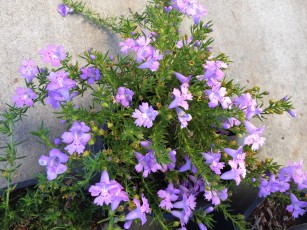
Color in the garden is something we all relish. One of the plants that caught my eye is called Hemiandra pungens. Pretty lavender-magenta flower clusters cover this small one foot plant. It?s drought tolerant although it looks better with occasional summer water.
This bright little shrub is another of the plants from Australia being trialed at the Arboretum. The Koala Blooms plant introduction program is a joint venture which include growers here and in Australia. Plants are evaluated for their beauty, durability and sturdiness with regard to drought, weather extremes and variations in soil types. Out of the trailing process new plants are selected and offered for sale to the public. Visit the Arboretum website for info on other great plants you might want to try in your garden. www.arboretum.ucsc.edu/koala-blooms
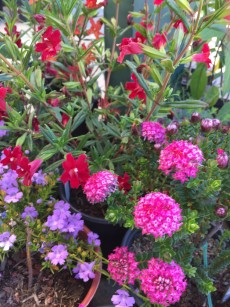
Another showy perennial that?s sure to make it?s way into the next appropriate garden I design is Pimelea ferruginea ?Bon Petite?. Bright pink umbel blossoms cover this small plant for many months starting in the spring. It?s hardy down to 25 degrees and requires little water once established. Also originating in Australia it looks great in a native low water-use cottage garden.
The common name for this plant is pink rice flower. The pot in the arboretum nursery happened to be placed near a red mimulus but it looked great even though you might think the color combination would be all wrong. Nature has a way of making things work despite the rules of the color wheel.
Several varieties of correa – also called Australian fuchsia – caught my eye. Although the flowers of this plant resemble fuchsias they are not related. Some do best with regular watering during the summer but the lovely correa pulchella ?Pink Eyre? is drought tolerant once established. Grow this three foot compact evergreen shrub in partial sun where it will bloom from fall through springtime and provide nectar for hummingbirds during the wintertime.
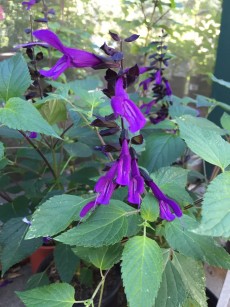
I was also drawn to the brilliant cobalt blue flowers of salvia guarantica. This plant is worth growing – in sun or partial shade – even though you might need to cut it down to ground level after each winter like Mexican bush sage. Growing four to five feet tall it starts blooming in early summer and continues till frost. They also do well in containers and are a favorite of hummingbirds.
Prostanthera was well represented with three varieties – ?Poorinda Bride?, ?Purple Haze? and my personal favorite, the Variegated Mint Bush. They are all good choices for colorful, easy to grow, hardy shrubs that require only occasional irrigation.
Among other choices at the Arboretum nursery were stand-by’s such as lion?s tail, Mexican marigold, Germander sage, Copper Glow New Zealand tea tree and giant buckwheat. This local resource offers a cornucopia of inspiration.

